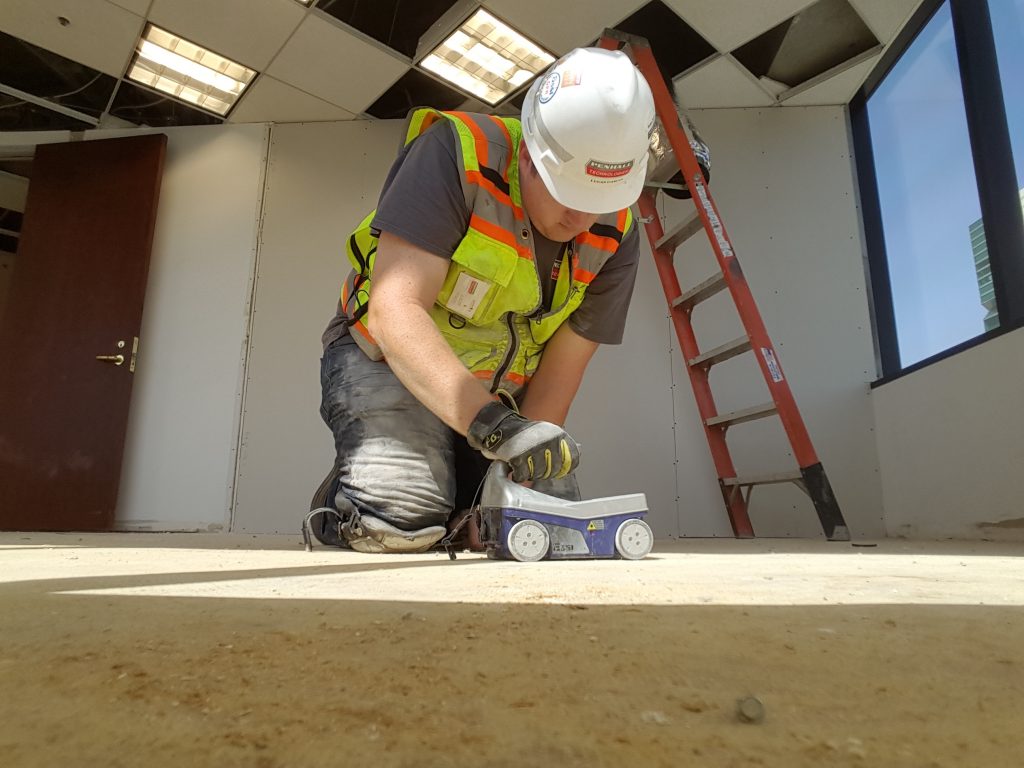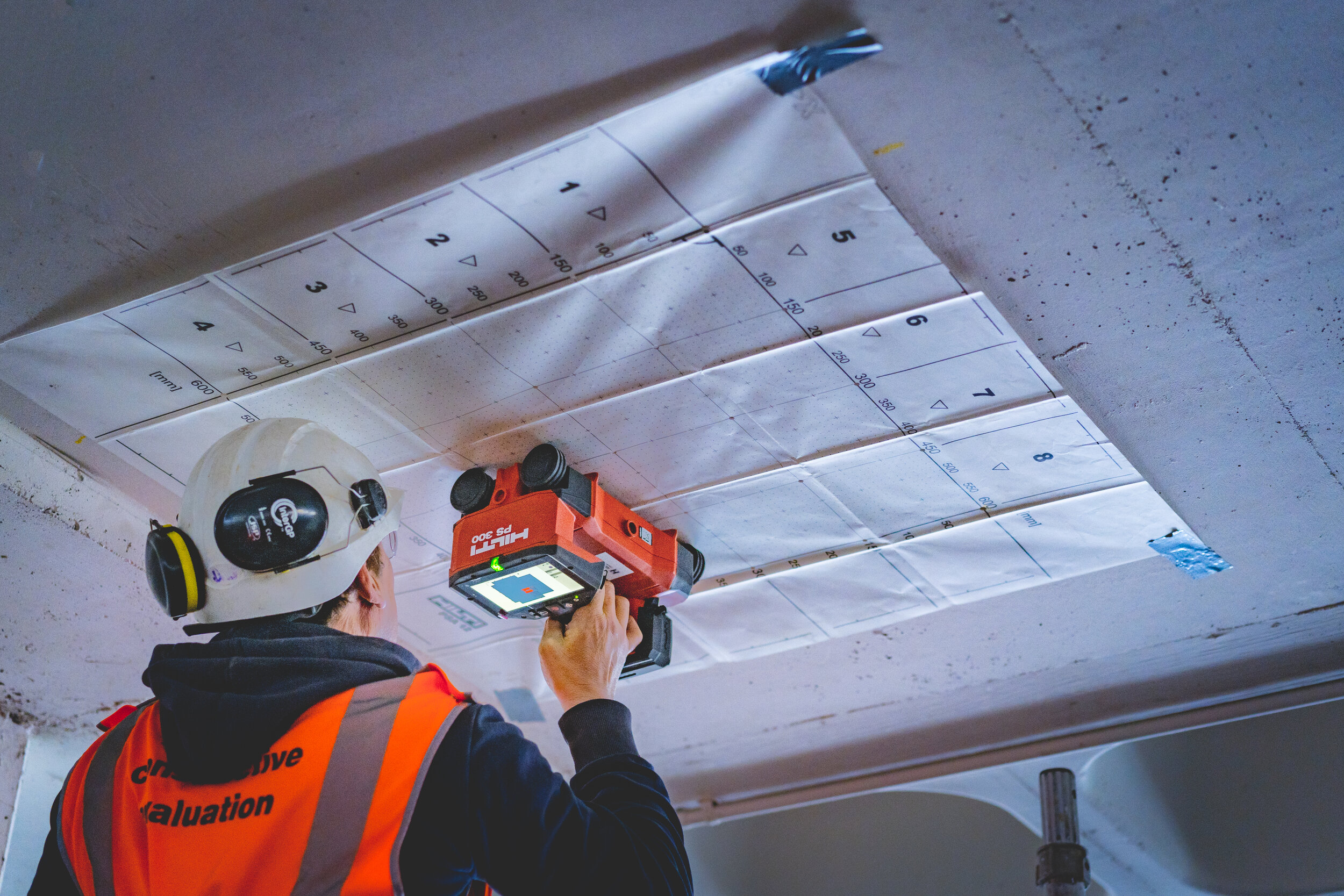The Significance of Exact Concrete Scanning in Detecting Underground Hazards
The ability to accurately spot and map these below ground threats is not simply an issue of benefit however a crucial element of ensuring the security of both building employees and the integrity of the task itself. By releasing sophisticated scanning modern technologies and techniques, professionals can discover concealed risks, stop pricey problems, and inevitably lead the way for smoother and more secure building ventures.
Advanced Scanning Technologies for Discovery
Sophisticated radar systems are reinventing the area of below ground discovery by giving unequaled accuracy and performance. These sophisticated scanning modern technologies use ground-penetrating radar (GPR) to produce thorough pictures of subsurface structures, supplying insights right into what exists underneath the surface with remarkable clarity. By discharging high-frequency pulses into the ground and gauging the reflections, radar systems can identify variations in product composition and discover below ground risks such as wires, pipes, and voids.
Among the key benefits of these advanced radar systems is their non-invasive nature, enabling thorough inspections without triggering damage to the existing structures. This not just guarantees the safety of the surrounding environment yet also lessens the demand for costly fixings or disruptions to continuous building tasks. Additionally, the real-time information offered by these scanning modern technologies makes it possible for quick decision-making and enhances general task effectiveness.
Value of Subsurface Mapping

Accurate subsurface mapping assists in preventing expensive damages to existing underground infrastructure, lowering the danger of crashes, and keeping task timelines. It makes it possible for job supervisors to make enlightened decisions pertaining to site planning, equipment release, and resource appropriation. In addition, subsurface mapping allows for better control amongst different groups dealing with a project and assists in adhering to regulatory requirements associated with below ground energy detection.
Mitigating Dangers in Construction Tasks
Efficient risk reduction techniques are important for making certain the success and safety and security of building projects. Recognizing and attending to potential threats before they escalate is important in keeping job timelines, spending plans, and general quality. One key element of mitigating risks in building tasks is thorough planning and assessment at the preliminary phases. Conducting extensive website surveys, consisting of precise concrete scanning for below ground threats, can aid in identifying potential concerns early on. Using innovative technologies like ground-penetrating radar and electromagnetic induction can help in discovering utilities, rebar, or other blockages that may position risks during construction.
In addition, developing clear interaction channels amongst all task stakeholders and guaranteeing strict adherence to safety and security procedures are essential parts of risk reduction. By proactively applying robust danger mitigation approaches, building and construction tasks can lessen delays, price overruns, and safety incidents, inevitably leading to successful job outcomes.

Stopping Expensive Damages and Delays
To decrease monetary losses and project obstacles, effective strategies must be applied to avoid costly problems and hold-ups in building and construction jobs. One important means to attain this is by carrying out thorough concrete scanning before any excavation job begins. By making use of innovative scanning innovations such as ground-penetrating radar (GPR) and electromagnetic read what he said induction, building groups can precisely detect below ground threats like rebar, channels, and various other utilities. Determining these blockages early assists in preparing the project format much more successfully and avoiding possible damages throughout excavation.
Furthermore, purchasing training programs for building and construction employees on the value of concrete scanning and secure excavation methods can substantially minimize the threat of hold-ups and accidents. Clear communication networks between job supervisors, engineers, and on-site workers are also vital to guarantee that every person is mindful of the prospective threats and adheres to the needed procedures to avoid costly damages. By focusing on positive actions like concrete scanning and promoting a society of safety and security and understanding, construction tasks can minimize the monetary influence of unforeseen below ground obstructions and avoid expensive hold-ups.
Ensuring Safety of On-Site Worker
By prioritizing proactive steps such as comprehensive training programs and clear interaction networks, building jobs can make sure the safety of on-site employees amid the prospective hazards discovered through concrete scanning. Correct training equips employees with the expertise and abilities required to browse construction sites safely, especially when dangers are recognized through scanning procedures. Training should cover danger acknowledgment, emergency situation procedures, and the proper utilization of individual protective tools to minimize threats efficiently.
Furthermore, developing clear communication networks is vital for disseminating information regarding recognized threats promptly. This makes certain that all on-site workers recognize potential dangers and can take essential safety measures to stay clear of accidents. Normal safety and security instructions, tool kit talks, and regular updates relating to scanning results help keep everybody informed and positive in preserving a secure workplace.
Moreover, carrying out stringent adherence to safety and security protocols and guidelines, performing normal security audits, and fostering a culture of safety consciousness amongst workers are vital elements in ensuring the health of on-site personnel throughout building and construction jobs - RainierGPR Concrete Scanning. Aggressive precaution not only secure employees from harm yet also add to the total success and effectiveness of the project
Conclusion
Making use of advanced scanning technologies and subsurface mapping helps mitigate dangers in building projects, protecting against pricey problems and hold-ups. It is essential for building companies to focus on the usage of accurate scanning techniques to minimize prospective hazards and ensure a smooth building procedure.

By proactively carrying out robust risk reduction techniques, construction projects can minimize delays, expense overruns, and safety and security events, eventually leading to effective job end results. - RainierGPR Concrete Scanning
To decrease economic losses and job setbacks, efficient methods must be carried out to stop pricey problems and delays in building and construction tasks. By prioritizing positive procedures like concrete scanning and promoting a society of safety and recognition, useful source building tasks can minimize the monetary impact of unanticipated below ground blockages and avoid anchor pricey hold-ups.
By focusing on positive actions such as comprehensive training programs and clear interaction networks, construction jobs can make certain the safety and security of on-site workers amid the prospective hazards discovered with concrete scanning. Utilizing sophisticated scanning technologies and subsurface mapping aids minimize risks in building jobs, avoiding pricey damages and hold-ups.